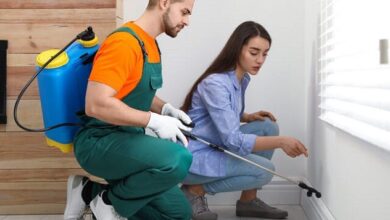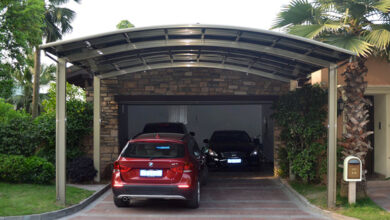
7 Common HVAC Problems (and What to Do About Them)
According to energy.gov, a high-efficiency HVAC system can reduce your energy bills by up to 50%. Imagine how an inefficient, faulty system can have the opposite effect.
If you want your HVAC system to do its job effectively without using unnecessary amounts of electricity, you need to ensure it’s operating at its best all year round.
These are the most common HVAC problems to look out for.
Table of Contents
1. Insufficient Temperature Control
Fluctuating temperatures and inconsistent cooling from room to room are clear signs that you have HVAC issues. One of the most common reasons for this lies in your thermostat.
Sometimes, it’s something simple, like a battery issue, causing the problem. Programmable thermostats operate off batteries which you must replace periodically to keep your thermostat operational.
Wear and tear on your HVACs belts and bearings, can also result in poor heating, overheating, and airflow issues.
Refer to your owner’s manual to make sure your thermostat is set correctly before you get in touch with Heating and Air Conditioning Services to resolve the issue.
If you can’t find any issues with the settings or batteries, these professionals can rectify thermostat issues easily.
2. Blower Running Continuously
There are several reasons why your HVAC’s blower never stops running.
The first thing to check is the fan switch on the thermostat. If it’s set to the ‘on’ position, the motor will run non-stop.
A fan relay in the furnace turns the blower on when there’s a call for heat. If this relay sticks, the blower will keep running.
It’s best to get in touch with an HVAC repair company to resolve issues with your blower running continuously.
3. Tripping Breakers
The blower on your HVAC can also cause the system to trip a circuit breaker in your home. That’s because this creates unusual energy surges that activate the trip switch on your circuit board.
Airflow blockages from a dirty filter cause your HVAC’s blower to work harder than usual to force air through the filter. This increases its energy consumption and leads to tripping breakers.
If your circuit breaker trips, always check your HVAC filters before resetting the switch.
If there’s no problem with the filter, your HVAC has deeper issues that need the attention of an HVAC repair person. These may include dirty coils, duct leaks, or blocked air registers.
Debris and dirt will clog the coils in your HVAC system, reduce its efficiency, make it work harder, and wear it out sooner. One way to keep them clean is by shutting off the power at the electric panel and hosing off the outdoor coil.
4. HVAC Problems With Ignition
Do you have a gas furnace that simply won’t ignite anymore? A blocked pilot light, gas supply problems, or another issue can cause this problem, for instance:
- Faulty flame sensor
- Dirty burners
- Short cycling
- Furnace lockout
- Delayed burner ignition
- Wear and tear
It’s never a good idea to mess around with gas, so get in touch with an experienced technician right away for assistance. They’ll resolve the issue and make sure it’s safe to operate your furnace.
5. Unusual Noises
HVACs rarely operate soundlessly, but unfamiliar noises can signal mechanical problems with your system.
Whining and squealing is a sign that the bearings in your blower motor or inducer motor are about to fail. Unfortunately, these issues warrant HVAC replacement as the high costs of HVAC motor replacement doesn’t warrant the effort.
Other odd noises can indicate dirty burners or airflow issues. Never ignore an HVAC that’s making strange sounds, they’re usually a sign that something big is about to go wrong.
If you have an older HVAC, squealing is a sign that the belt connecting the blower and the motor has slipped.
Loud buzzing noises frequently indicate loose parts, refrigerant leaks, a malfunctioning compressor, or broken isolation feet. Unusual noises always require the attentions of an HVAC repair specialist as they can herald impending HVAC failure.
6. Water Puddles
All HVAC systems produce condensate as a by-product of cooling and heating the air in your home. This fluid usually seeps away via drain pipes.
If these drain lines become clogged or cracked, water will pool underneath your HVAC unit. You can keep your HVAC drain lines clear by pouring bleach down the drain regularly.
A faulty collector box, heat exchanger, or evaporator drain pan can also cause water to pool around your HVAC unit. Get in touch with an HVAC repair technician to find the source of the leak and correct it.
Clogged drain pipes can also cause musty odors and encourage mold growth inside your HVAC, so it’s important to resolve them as soon as possible.
7. Refrigerant Leaks
The cooling section of your HVAC relies on chemicals called refrigerants to function. If refrigerant levels sink below the optimum due to a leak, your HVAC will stop working.
Several things can cause a refrigerant leak, such as:
- Corrosion in the system’s coils
- Loose fittings
- Holes in refrigerant pipes
It’s vital to check your HVAC’s refrigerant levels before summer rolls around and ask a trained service technician to inspect your HVAC regularly to check for the issues that can lead to refrigerant leaks.
Keep Your Home Running Smoothly All Year
You can easily prevent all these HVAC problems by inspecting your HVAC regularly and ensuring it receives ongoing maintenance.
While you can manage most tasks like changing batteries and air filters yourself, it’s a good idea to hire an HVAC repair and maintenance company to check your HVAC at least twice a year.
Ongoing care and maintenance will ensure your electricity bills stay low, and your home remains comfortable regardless of the season.
Browse our blog for more of the best home repair, refurbishment, and decorating ideas.








